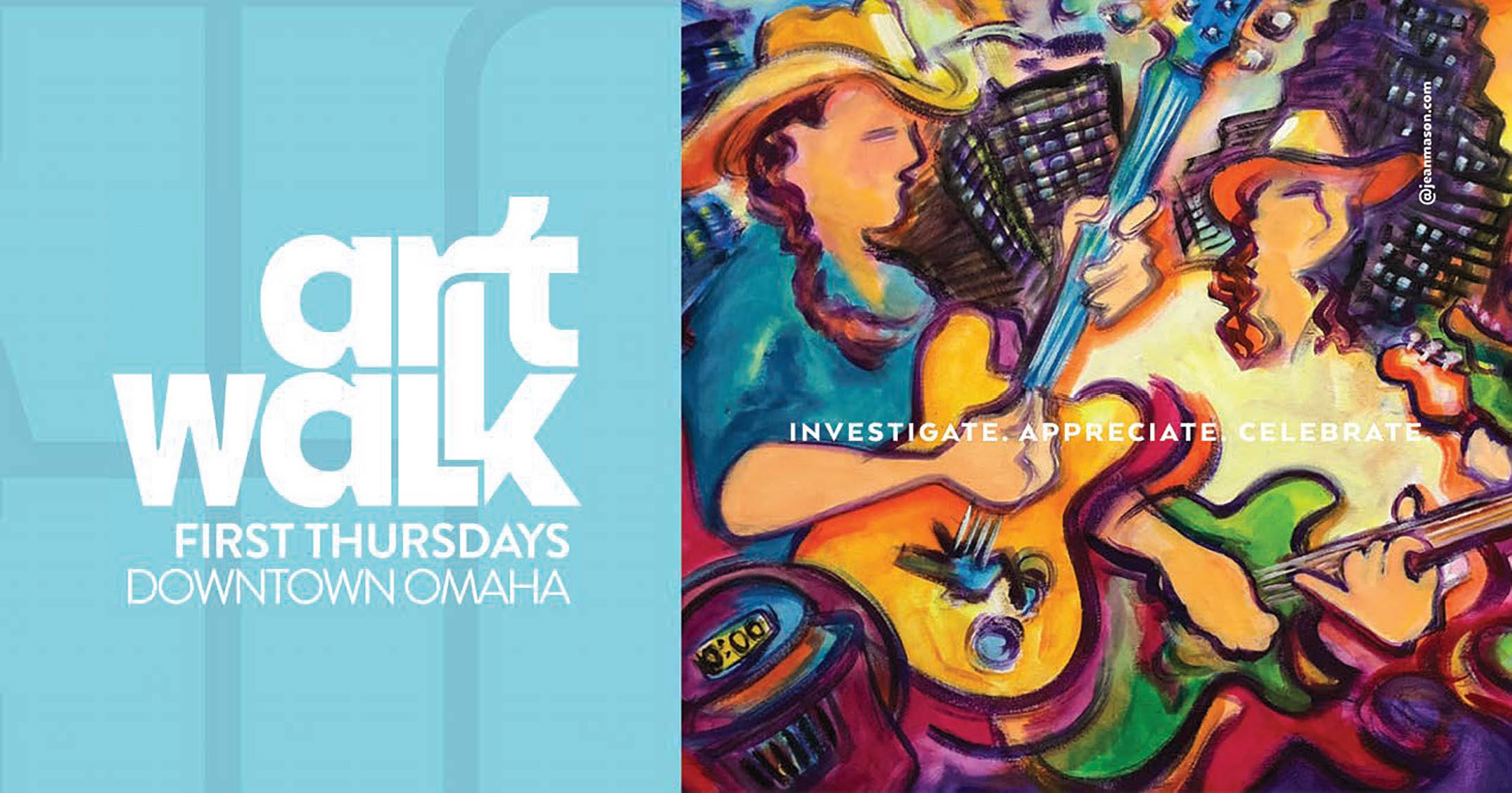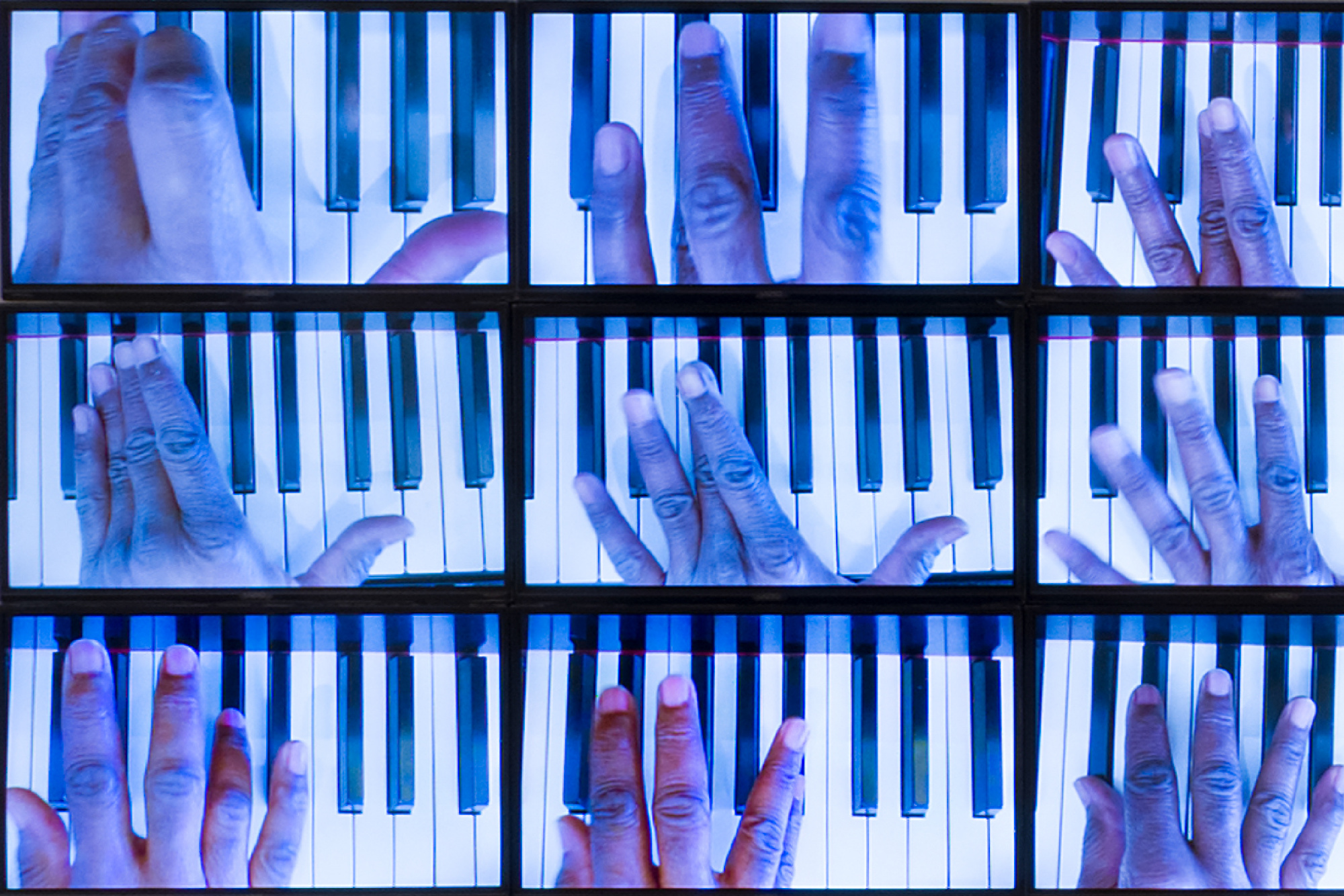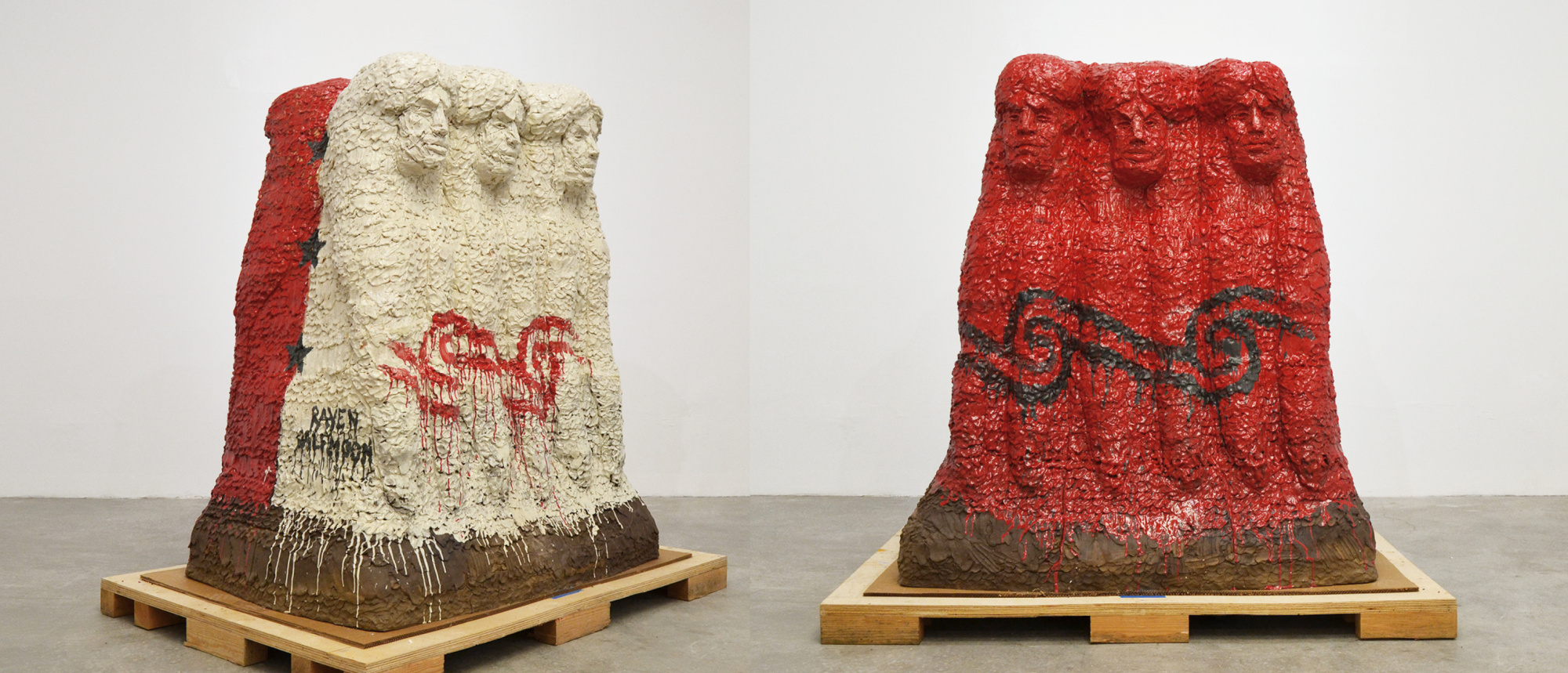
First Thursday Downtown Omaha Art Walk
Artists' Cooperative Gallery 405 S 11th St, Omaha, NE, United States +4 moreJoin us on the first Thursday of each month from 5pm to 9pm as we celebrate the vibrant art scene that helps define our city.
— dedicated to promoting the growth and appreciation of the arts in the Omaha community.

Join us on the first Thursday of each month from 5pm to 9pm as we celebrate the vibrant art scene that helps define our city.

Join us on the first Thursday of each month from 5pm to 9pm as we celebrate the vibrant art scene that helps define our city.

From wordplay with the actual letters that comprise “BLACK,” to utilizing the expanse of shades of black house paint—including as Nightfall, Soot, Ebony Field, and Black Beauty—to posing the question, “If the color black had a sound, what would it be?,” Benjamin calls attention to the color’s deep historical and social resonance.

With inspirations that orbit centuries from ancient Indigenous pottery to Moai statues to Land Art, Halfmoon interrogates the intersection of tradition, history, gender, and personal experience.

From wordplay with the actual letters that comprise “BLACK,” to utilizing the expanse of shades of black house paint—including as Nightfall, Soot, Ebony Field, and Black Beauty—to posing the question, “If the color black had a sound, what would it be?,” Benjamin calls attention to the color’s deep historical and social resonance.

With inspirations that orbit centuries from ancient Indigenous pottery to Moai statues to Land Art, Halfmoon interrogates the intersection of tradition, history, gender, and personal experience.

From wordplay with the actual letters that comprise “BLACK,” to utilizing the expanse of shades of black house paint—including as Nightfall, Soot, Ebony Field, and Black Beauty—to posing the question, “If the color black had a sound, what would it be?,” Benjamin calls attention to the color’s deep historical and social resonance.

With inspirations that orbit centuries from ancient Indigenous pottery to Moai statues to Land Art, Halfmoon interrogates the intersection of tradition, history, gender, and personal experience.

From wordplay with the actual letters that comprise “BLACK,” to utilizing the expanse of shades of black house paint—including as Nightfall, Soot, Ebony Field, and Black Beauty—to posing the question, “If the color black had a sound, what would it be?,” Benjamin calls attention to the color’s deep historical and social resonance.

With inspirations that orbit centuries from ancient Indigenous pottery to Moai statues to Land Art, Halfmoon interrogates the intersection of tradition, history, gender, and personal experience.

From wordplay with the actual letters that comprise “BLACK,” to utilizing the expanse of shades of black house paint—including as Nightfall, Soot, Ebony Field, and Black Beauty—to posing the question, “If the color black had a sound, what would it be?,” Benjamin calls attention to the color’s deep historical and social resonance.

With inspirations that orbit centuries from ancient Indigenous pottery to Moai statues to Land Art, Halfmoon interrogates the intersection of tradition, history, gender, and personal experience.